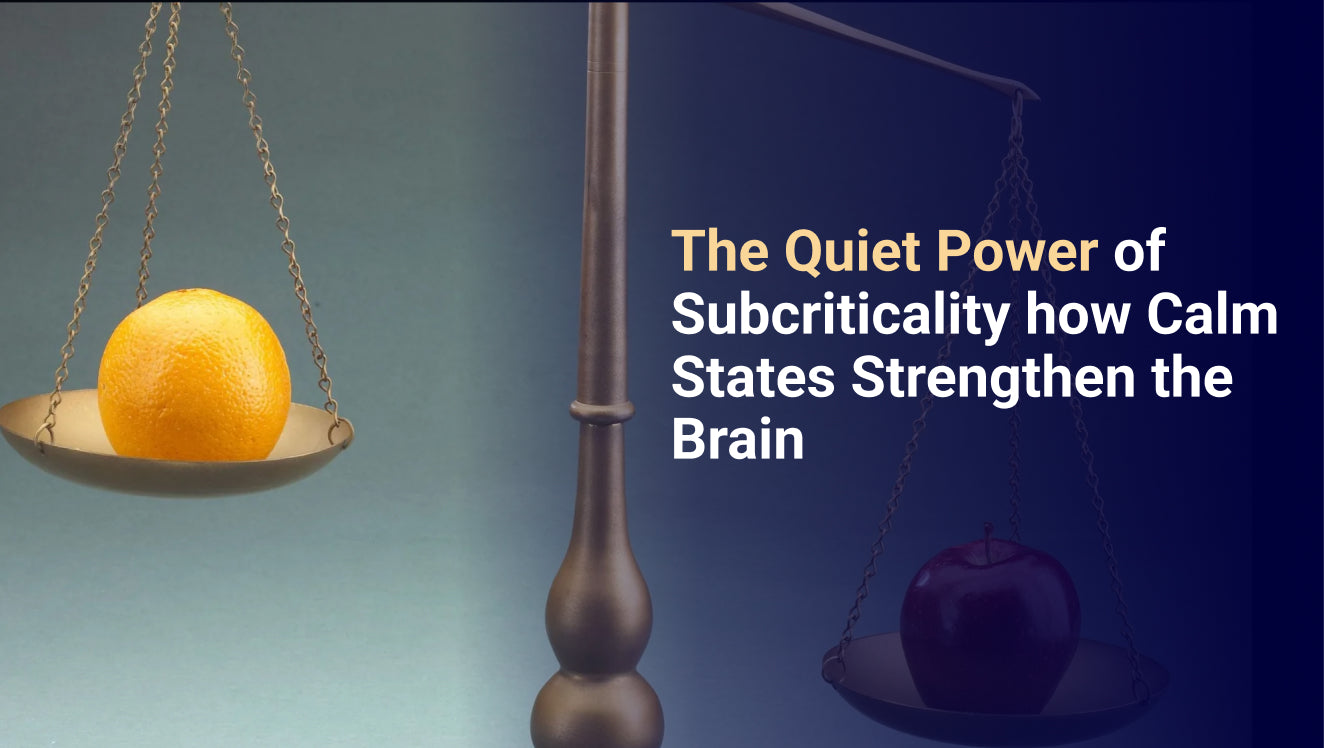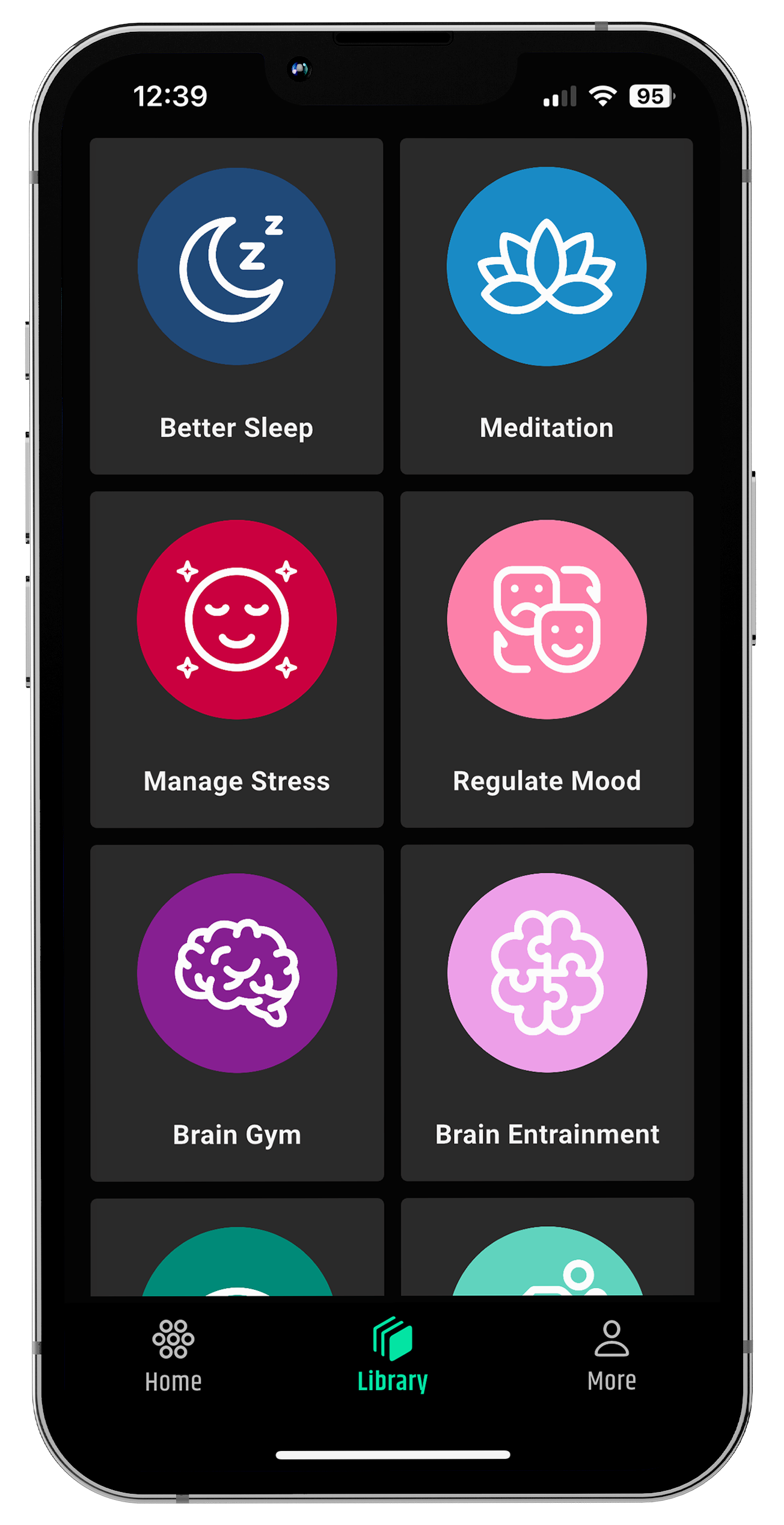When we think of brainpower, we often imagine bursts of creativity, problem-solving under pressure, or moments of sudden insight. But neuroscience is revealing a quieter, equally vital side to mental performance one rooted not in chaos or excitement, but in calm. This is the realm of subcriticality, the brain’s stable, energy-efficient mode that keeps the entire system balanced, clear, and resilient.
Far from being idle, this “low gear” of the brain is where restoration, organisation, and long-term efficiency thrive. In a world that constantly rewards stimulation and speed, learning to access subcritical states might just be one of the most underrated ways to support mental health and peak performance.
What Is Subcriticality and Why Does It Matter?
In neuroscience, subcriticality describes a state in which brain networks operate below the threshold of chaotic or explosive activity. It’s the brain’s version of a calm, controlled hum steady, predictable, and energetically conservative.
When your brain is in this mode, neurons fire in synchrony rather than in scattered bursts. It’s like the difference between a smooth jazz ensemble and an overexcited drum solo. Subcriticality helps maintain stability, conserve energy, and prevent neural “overheating.”
This state supports clarity and focus by minimising internal noise. Instead of constantly jumping between new ideas or external demands, the brain quietly integrates information, strengthens memory traces, and restores the balance of neurochemicals like serotonin and GABA that support calm and well-being.
The Science of Calm: How Subcriticality Fuels Brain Efficiency
Researchers studying neural dynamics often describe the brain as a complex system that shifts between three broad regimes:
-
Supercritical (high energy) – Fast, chaotic, creative, and exploratory, but energetically costly and unstable.
-
Critical (balanced) – A dynamic sweet spot where creativity, learning, and adaptability peak.
-
Subcritical (low energy) – Calm, organised, and restorative essential for long-term stability.
In subcritical states, neural firing patterns slow down and synchronise. This allows the brain to:
-
Conserve energy: Less metabolic fuel is used, leaving more reserves for periods of demand.
-
Reduce mental noise: By lowering unnecessary neural chatter, cognitive accuracy improves.
-
Stabilise mood: The calm synchronisation of neural activity helps regulate stress systems.
-
Enhance memory consolidation: Especially during deep sleep, subcritical rhythms allow the brain to store and integrate information effectively.
You can imagine this as your mind’s “maintenance mode.” While the high-energy states drive exploration and performance, subcriticality ensures the system doesn’t crash.
Calm as a Cognitive Superpower
In subcritical states, the brain does its essential background work cleaning up, repairing, and integrating. During slow-wave sleep, for example, subcritical dynamics dominate as the hippocampus communicates with the cortex to consolidate memories. Similarly, when you’re daydreaming, meditating, or walking quietly, your brain isn’t idle; it’s refining its internal models and preparing for future challenges.
This quiet processing is what allows you to think clearly later, to be creative without burning out, and to respond thoughtfully instead of reactively. It’s the hidden infrastructure behind resilience.
How to Cultivate Subcritical States in Daily Life
Modern life often keeps us locked in “critical” or “supercritical” brain states—racing thoughts, constant notifications, endless multitasking. To access subcritical calm more often, you need deliberate recovery practices that signal your nervous system to downshift.
Here are some evidence-based ways to do that:
1. Slow, Rhythmic Breathing
Slow breathing at 5–6 breaths per minute activates the parasympathetic nervous system, synchronising heart and brain rhythms. This promotes the same neural coherence seen in subcritical activity.
2. Mindfulness and Meditation
Regular mindfulness training helps quiet spontaneous neural firing and stabilises brain networks like the Default Mode Network (DMN). Over time, this reduces cognitive “noise” and strengthens mental clarity.
3. Movement That Balances, Not Pushes
Gentle movement such as yoga, tai chi, or walking in nature encourages calm coordination between motor, sensory, and emotional systems, supporting whole-brain synchrony.
4. Digital Downshifting
Constant digital stimulation prevents the brain from entering restful modes. Short screen-free breaks or scheduled “quiet hours” help restore natural rhythm and focus.
5. Prioritise Deep Sleep
Subcritical states naturally emerge during deep, non-REM sleep. Maintaining consistent sleep routines and reducing evening light exposure can significantly enhance this restorative phase.
The Balance Between Calm and Challenge
While calm is essential, spending too much time in low-activity states can lead to sluggishness or disengagement. The key is dynamic balance—the ability to move fluidly between calm and action.
Just as athletes alternate between training and recovery, the healthiest brains oscillate between subcritical restoration and critical engagement. This natural rhythm is what keeps your mind adaptable, creative, and emotionally balanced.
A New Kind of Brain Power
The next time you feel the urge to fill every quiet moment with activity, remember this: the calm state isn’t wasted time it’s neural investment. Subcriticality is where your brain builds the foundation for focus, emotional regulation, and insight.
In a culture obsessed with constant stimulation, reclaiming stillness may be one of the most revolutionary acts of self-care.
When your brain learns to rest deeply, it learns to live wisely.
References
-
Beggs, J. M., & Timme, N. (2012). Being critical of criticality in the brain. Frontiers in Physiology, 3, 163.
-
Cocchi, L., Gollo, L. L., Zalesky, A., & Breakspear, M. (2017). Criticality in the brain: A synthesis of neurobiology, models and cognition. Progress in Neurobiology, 158, 132–152.
-
Tononi, G., & Cirelli, C. (2014). Sleep and the price of plasticity: From synaptic and cellular homeostasis to memory consolidation and integration. Neuron, 81(1), 12–34.
-
Raichle, M. E. (2015). The brain’s default mode network. Annual Review of Neuroscience, 38, 433–447.
-
Northoff, G. (2018). The spontaneous brain: From the mind–body problem to the world–brain problem. MIT Press.



























Share:
10 Quick Mid-Day Reset Tips to Kick Work Stress
The Power of Supercriticality: How Brain Signal Variability Fuels Creativity and Adaptability